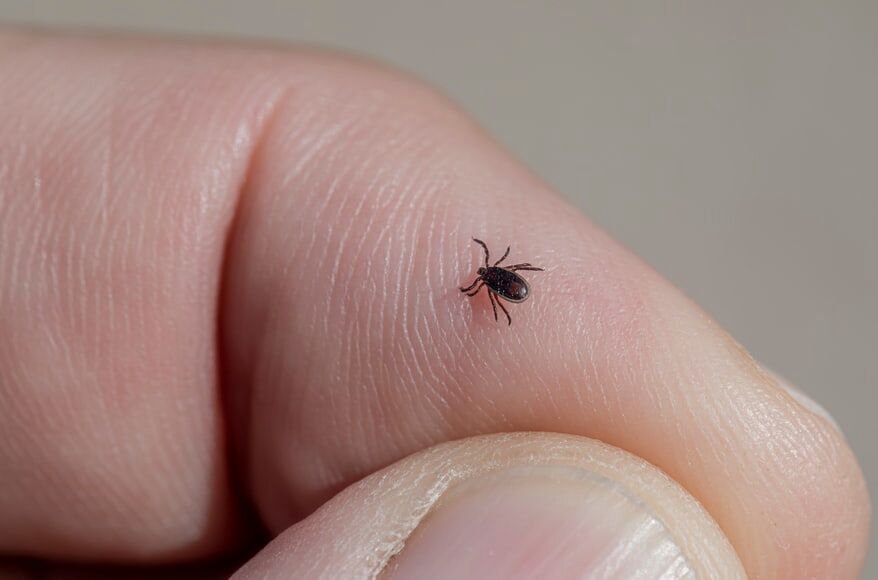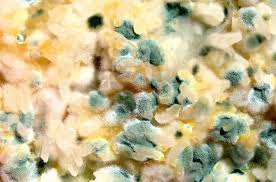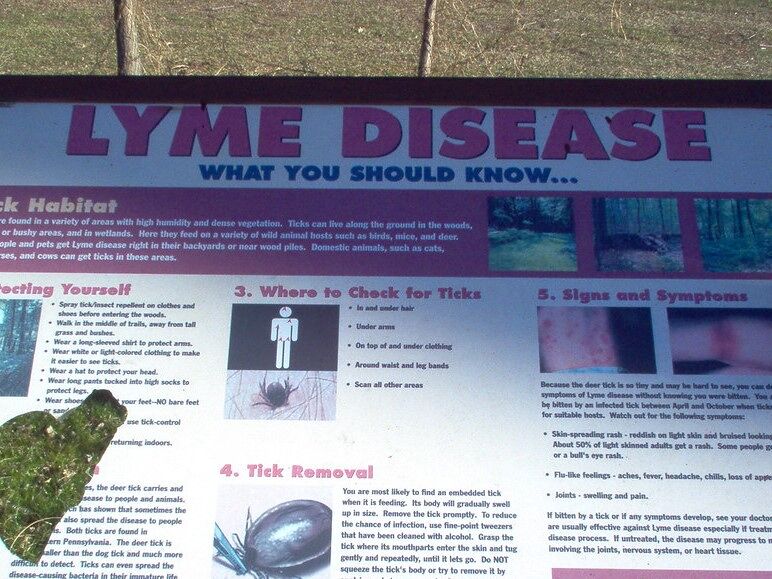How Does Lyme Disease Become “Chronic”?

In this blog, we will look at Lyme Disease and answer the question ‘How does Lyme Disease become chronic?’ You will learn:
- What Lyme Disease is
- How complex Lyme Disease is
- Why and how Lyme Disease can become a chronic condition
Do you know what Lyme Disease is and how it becomes chronic? Do you suffer from chronic Lyme Disease and its symptoms? If you want to know more about this increasingly common disease and how to best optimize your health, then this blog is for you. Please read on for answers!
** Please note: If you want the longer, more detailed version of this article, then please click here **
What is Lyme Disease (LD)?
Lyme Disease is a tick-borne illness. It is caused by the bacteria borrelia burgdorferi and is transmitted through tick bites. It has many different symptoms and can present in many ways.
After the initial tick bite, a person may develop an early stage borrelia infection which is acute Lyme Disease. If not treated properly, or in some cases, despite treatment, it can worsen and develop into late stage Borrelia infection or chronic Lyme Disease.
We have written extensively about Lyme Disease in our blogs. Please start here with some definitions of Lyme and continue reading through our blog for tons of information on Lyme Disease. In our clinic, we are experts at diagnosing and treating Lyme.
Is Chronic Lyme Disease Common?
- 63% of people today infected with borrelia develop chronic Lyme Disease (Davidsson, 2018).
- An estimated 5-20% of patients may have chronic symptoms after getting Lyme Disease and these symptoms can be debilitating (Columbia University, 2021).
- 5%–10% of patients had persisting symptoms 6–12 months after antibiotic treatment for Lyme Disease (Schmid H, 2021).
- Up to 15-40% of late-stage Lyme patients develop neurological disorders, which are responsible for many symptoms of chronic Lyme Disease (CDC, 2007).
The statistics are contradictory, but they do indicate that chronic Lyme Disease is not uncommon and is a growing health issue.
What exactly is Chronic Lyme Disease?
Unfortunately, Lyme Disease is not completely understood in the medical world. It is often missed or misdiagnosed. When left untreated in its acute early phase, it can become chronic. Sometimes, treatment fails and it can still become chronic Lyme. Sometimes, a person goes undiagnosed for Lyme because they didn’t notice the tick bite and never went to the doctor. In all of these scenarios, a person can develop chronic long-term symptoms that will likely very much affect their quality of life.
Different Types of Long-term Lyme Disease Exist: Chronic Lyme Disease vs. PTLDS
Chronic Lyme Disease and Post-Treatment Lyme Disease Syndrome (PTLDS) are two terms that are sometimes used to describe very similar conditions. Strictly speaking, PTLDS refers to people who were already treated for Lyme Disease but, unfortunately, go on to experience longer lasting Lyme Disease symptoms. It does not include those who received a misdiagnosis or a delayed diagnosis, which then resulted in chronic symptoms of Lyme Disease before receiving any treatment for Lyme. That is defined as chronic Lyme Disease.
It’s a little confusing but the bottom line is that people with either PTLDS or chronic Lyme are still suffering from Lyme symptoms, have a reduced quality of life and are probably not getting the medical help they need. This is where Functional Medicine, and our clinic in particular (as we specialize in treating Lyme Disease), can help. Please get in touch with us if you are struggling with ongoing issues from Lyme Disease here.
Post-Treatment Lyme Disease Syndrome is complex with non-specific and subjective symptoms. It is not thought to be caused by an ongoing infection (Schmid H, 2021). The CDC defines PTLDS as symptoms of pain, fatigue or difficulty thinking that last for more than 6 months after finishing Lyme Disease treatment with antibiotics. To diagnose PTLDS, it is mainly a diagnosis of exclusion. This means we rule out any other potential diseases through a process of elimination of other potential conditions.
How do you know if your Lyme Disease is Chronic?
Late-stage Lyme Disease has different symptoms. These may appear months or even years after the initial tick bite. Symptoms of Late-stage, Chronic Lyme or PTLDS include:
- Severe headaches and neck stiffness
- Additional EM rashes in new places on the body
- Facial palsy, also known as Bell’s palsy – paralysis of one side of the face
- Arthritis or joint pain and swelling, especially in large joints like the knee
- Tendon, muscle, joint, nerve or bone pain
- Dizziness or shortness of breath
- Inflammation in the brain or spinal cord
- Shooting pains, numbness or tingling in the hands or feet
- Fatigue, fevers, chills and sweats
- Tremors or seizures
- Respiratory infections and sore throat
- Stomach pain
- Heart palpitations, irregular heartbeat, cardiac issues or Lyme carditis (inflammation of the heart)
- Anxiety, paranoia, rage and hallucinations
- Hearing sensitivity
- Vocal cord damage
- New food allergies or multiple-chemical sensitivities
- Cognitive neurological issues
- Alzheimer’s Disease (you can read more about Lyme & Alzheimer’s in our blog here)
- Immune system dysfunction and chronic inflammation
- Inflammation of the lining of the brain or meninges
- Stress, anxiety and depression can result from being ill for so long, from being misdiagnosed or from the severity of symptoms
That’s quite a long and scary list of possible symptoms. This is why early detection is key as Lyme Disease is easiest to treat within the first 30 days of exposure.
To Read About Blog Topic, Scroll Down
Want To Work With Our Clinic?
Do you have a chronic or mystery illness that no one has been able to help you with? Are you simply wanting to re-connect with a healthier version of yourself? It’s Time To Finally Feel Better!
Why & How does Lyme Disease becomes Chronic?
There are various theories and research on how Lyme Disease can become chronic. It seems that it can be different in different people. We are all individuals and there is never only one reason, or one mechanism of action, for illness. The Borrelia bacteria can react differently once it is in different bodies.
Some theories for the mechanism of action for long-term chronic Lyme include:
Autoimmunity
The Borrelia burgdorferi Lyme infection can trigger persistent immune activation or an autoimmune response (Columbia University, 2021). This autoimmune response can cause symptoms that last, even after the infection has been cleared. This happens in the case of Lyme arthritis for example (see our blog here LINK) and can be difficult to resolve.
Persister Bacteria Lie Dormant
Some experts think that PTLDS is due to a persistent but very difficult to detect infection (CDC, 2022) and (Columbia University, 2021). Borrelia can act as a ‘persister’ bacteria (Rudenko N, 2019). Persister bacteria are thought to be responsible for recurrent and chronic infections. Lyme Disease can lie dormant and then be reactivated at a later stage.
Biofilms
The Borrelia bacteria can hide behind biofilms, which can form to protect the bacteria. Borrelia can burrow deep into tissue and hide. It is then unreachable by any antimicrobials or antibiotics.
Different Complex Borrelia Strains
The Borrelia bacteria has the most complex genomic structure among known bacteria (Davidsson, 2018) and Borrelia bacteria are very genetically diverse.
There are different strains of the Borrelia bacteria, which produce different Borrelia strains produce and different immune system responses in an infected person. The standard treatment of care, antibiotics, is too general and may not be able to fight off the different Borrelia strains. So, treatment is not guaranteed to work.
Complexity of Borrelia
Lyme arthritis can develop because the Borrelia burgdorferi bacterium has an unusual chemical composition (Jutras BL, 2019). Components from the Borrelia bacteria may persist after initial infection and continue to trigger an immune response. This may contribute to or cause the excessive inflammation seen in Lyme and can still happen even after the Lyme bacteria have been killed off (Jutras BL, 2019).
Lyme Co-Infections
A tick can spread approx. 237 different types of bacteria and many types of viruses (Davidsson, 2018). Chronic Lyme patients might be simultaneously infected with other microbes. These infections are called co-infections. They may go undiagnosed or misdiagnosed and symptoms will persist if treatment is not given.
Damage from Borrelia
There may be damage from the prior Borrelia Lyme infection, including possible changes in brain chemistry. This can, in some cases, lead to abnormally activated pain or mood pathways or altered cognition (Columbia University, 2021).
Misdiagnosis
Misdiagnosis can often happen with Lyme. The testing can give a false negative result. The doctor may not be Lyme-literate and therefore not recognize the symptoms of Lyme Disease. The doctor may interpret the Western Blot test incorrectly. If Lyme Disease is misdiagnosed, i.e., not found, then it will be untreated and can develop into a chronic condition.
Other causes
It could be that the symptoms of PTLDS are due to other root causes and are unrelated to the initial Borrelia burgdorferi infection (CDC, 2022).
In the case of chronic Lyme or PTLDS, we recommend following a Functional Medicine approach. More antibiotics for a longer time has been shown in research to be ineffective. Chronic Lyme requires a deep and multi-pronged approach. You need to get to the underlying root causes. See more about treating Lyme Disease in our blogs here and here.
Summary
- Lyme Disease is a tick-borne illness. If not treated properly, or in some cases, despite treatment, it can worsen and develop into late stage Borrelia infection or chronic Lyme Disease.
- Chronic Lyme Disease is not uncommon and is a growing health issue.
- Chronic Lyme Disease and Post-Treatment Lyme Disease Syndrome (PTLDS) are two terms that are sometimes used to describe very similar conditions.
- People with either PTLDS or chronic Lyme are still suffering from Lyme symptoms, have a reduced quality of life and are probably not getting the medical help they need. This is where Functional Medicine, and our clinic in particular, can help.
- There are various theories on how Lyme Disease can become chronic. It can vary from one person to another because the Borrelia bacteria can react differently once it is in different bodies.
- Some theories for the mechanism of action for long-term chronic Lyme include: autoimmunity, persister bacteria can lie dormant in the body, biofilms, complex Borrelia strains, Lyme co-infections, damage from a Borrelia infection and/ or misdiagnosis.
- Functional Medicine can really help in the case of chronic Lyme or PTLDS. More antibiotics for a longer time is ineffective. Chronic Lyme requires a deep and multi-pronged approach that gets to the underlying root causes.
** Please stay tuned for our next Blog! **
In our clinic, we are Lyme-literate doctors. We are experts at identifying root causes, diagnosing conditions like chronic Lyme Disease and helping people to address the root causes of illness and improve their health. We treat Lyme Disease and post-Lyme chronic symptoms, with both natural and pharmaceutical approaches, depending on the individual case.
Are You Suffering From A Chronic Illness?
Does your current health situation look like this…
- Do you feel that you have tried many things and either nothing works, or the treatment does not hold?
- Have you been told that there is nothing that can be done to reverse your illness and you just need to manage symptoms?
- Does your illness impact your work, your family, your happiness and your social life?
We specialize in finding answers and solutions for complicated chronic illness when people feel like they have tried everything. If this sounds like you, book a free call with us to see if we are the right fit for your health goals.
Dr. Miles has spoken for the following organizations:

















